What to do on Mo'orea Island, French Polynesia
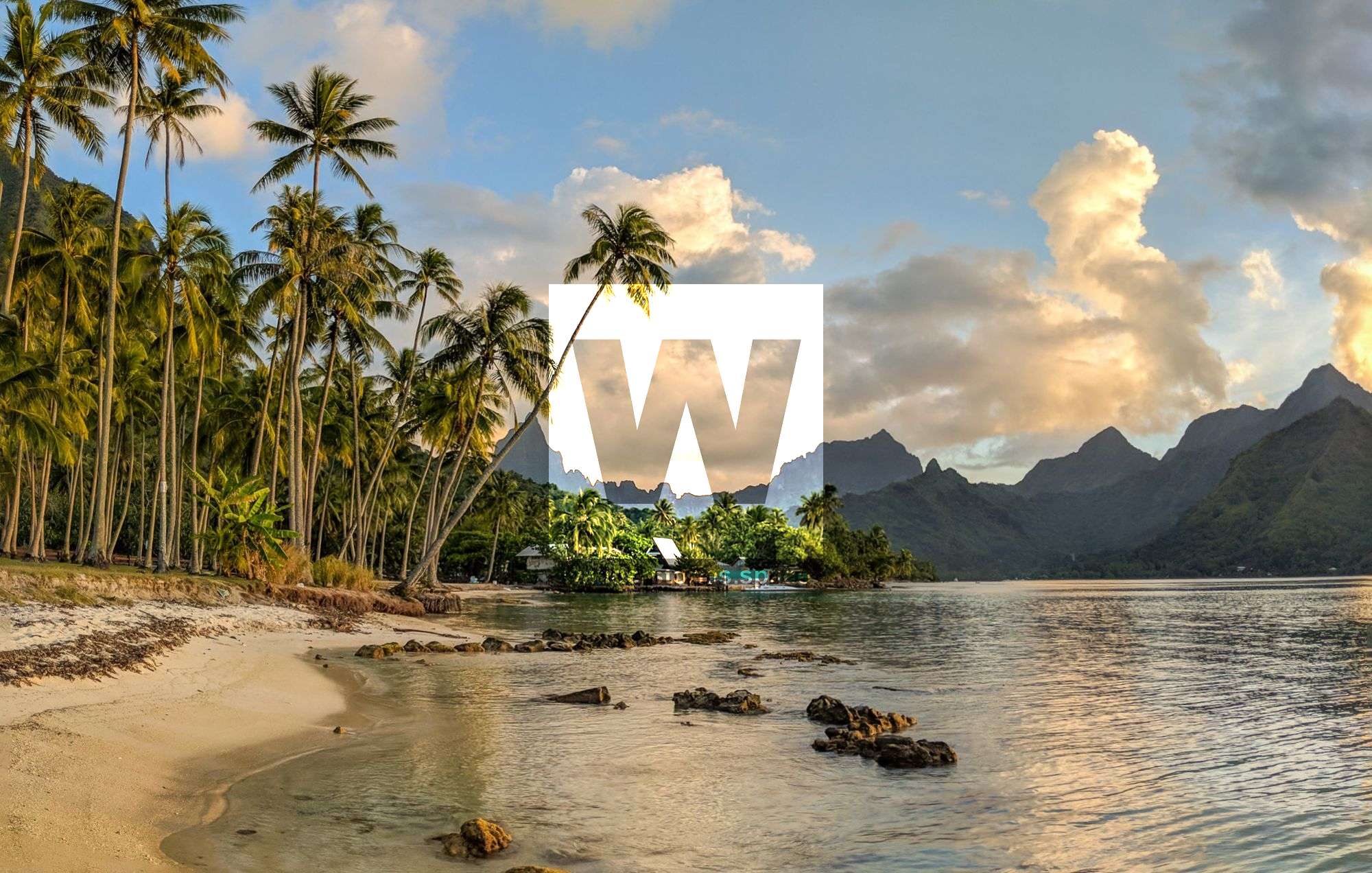
Location - Mo'orea, French Polynesia
Mo'orea, also spelled Moorea, is a South Pacific island that is part of French Polynesia and is often visited by sailboats. It's known for its jagged, volcanic mountains, white sandy beaches, and crystal-clear blue lagoons. In the north, Mount Rotui overlooks the picturesque Ōpūnohu Bay and Cook's Bay. Inland, in the heart of Mo'orea, hiking trails wind through rainforest on the slopes of Mount Tohivea. From Belvédère Lookout, you can capture some of the most panoramic views of the island's peaks and across to Tahiti. Mo'orea is a outdoorsy person's paradise, whether that be surf or turf.
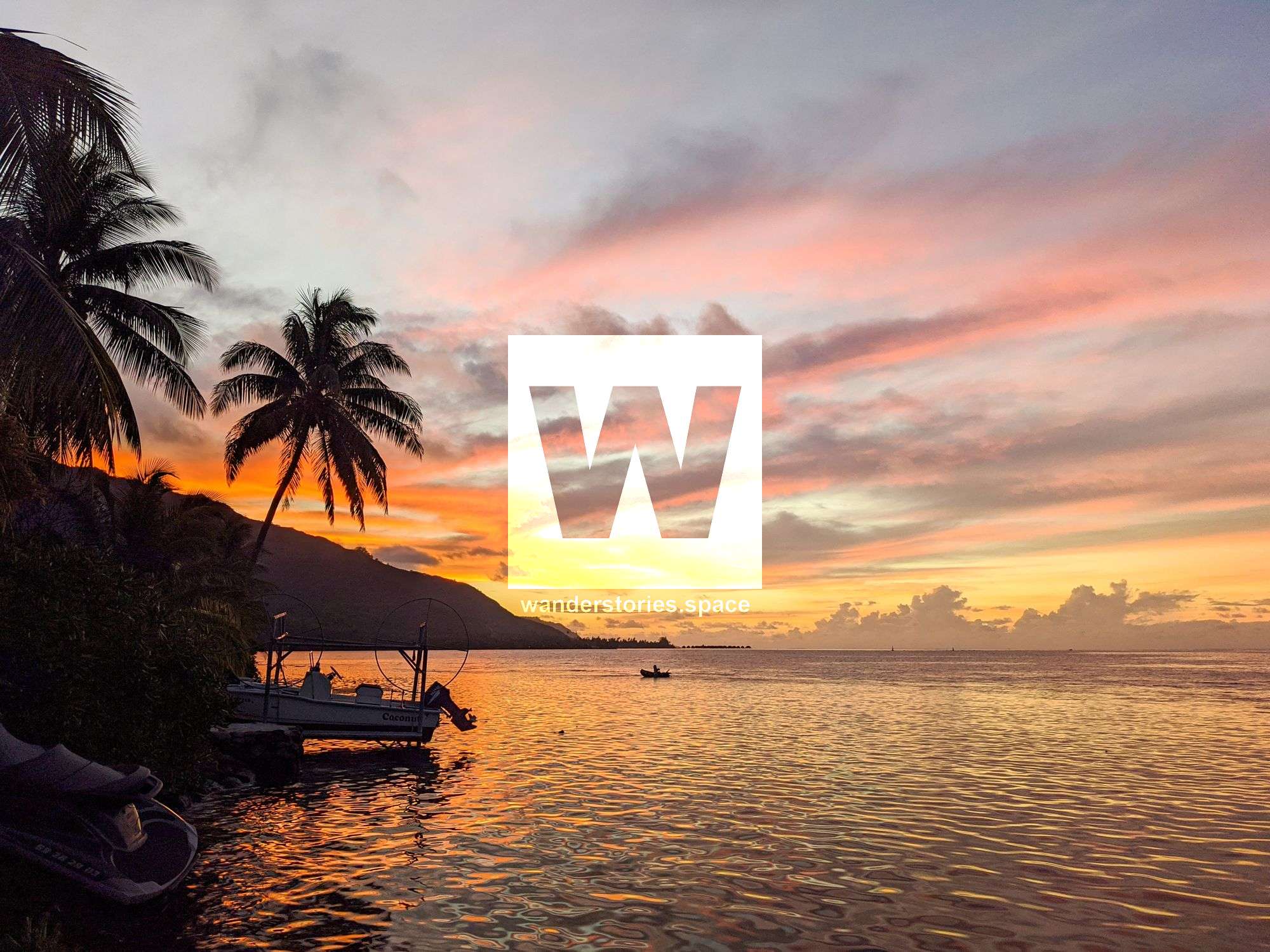
Did you know: The overwater bungalow was invented in Mo'orea.
Cycle around magnificent Cook's Bay and Opunohu Bay, explore the island's archaeological sites or simply soak up the sun and splash around in the lagoon.
Pinnacles of green and grey with threads of water tumble down fern-softened cliffs; surrounded by peaceful meadows and pastel-painted houses with gardens of hibiscus and the flutter from birds of paradise, circle the island in a fantasy of happy, yet simple villages.
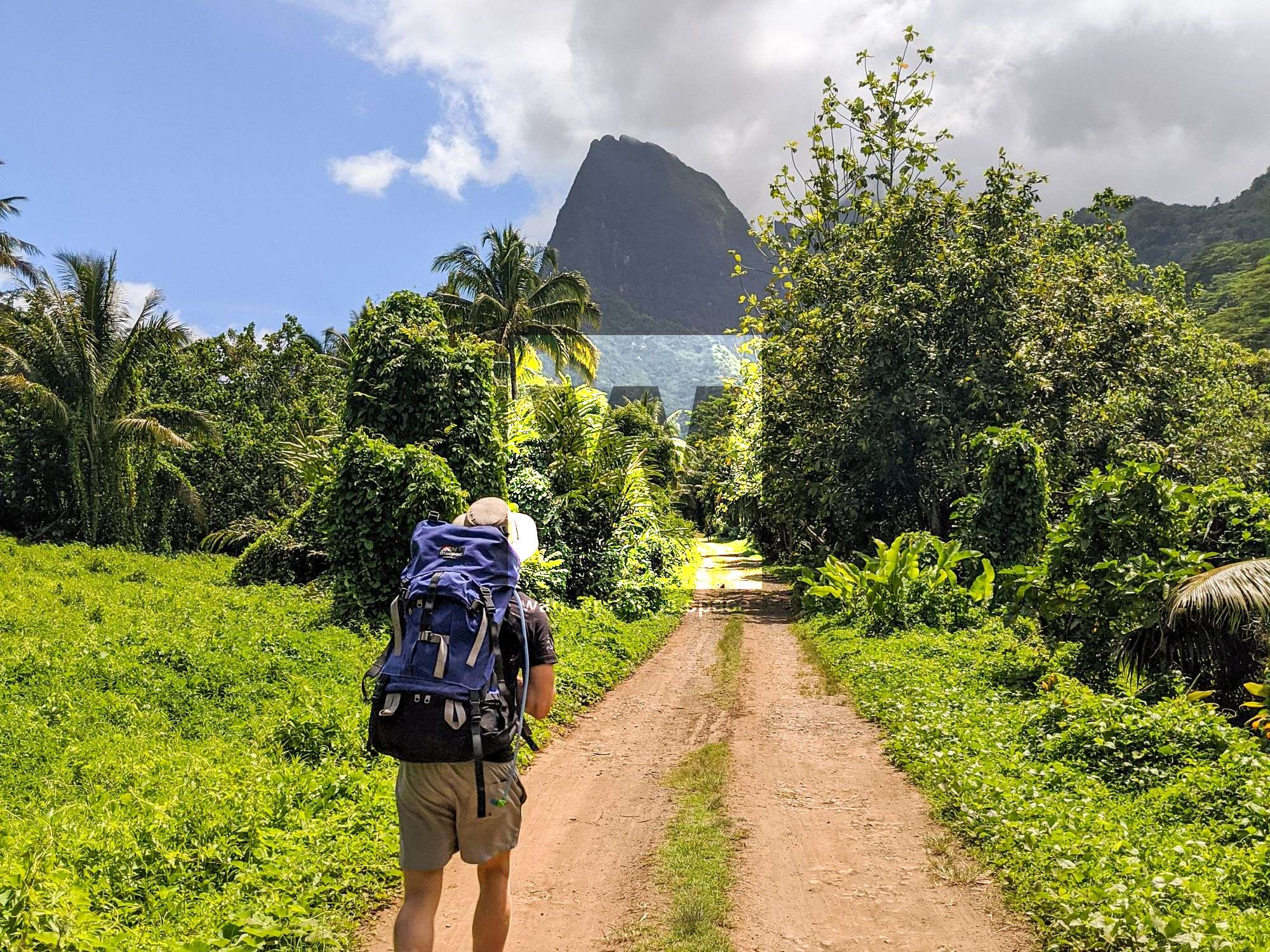
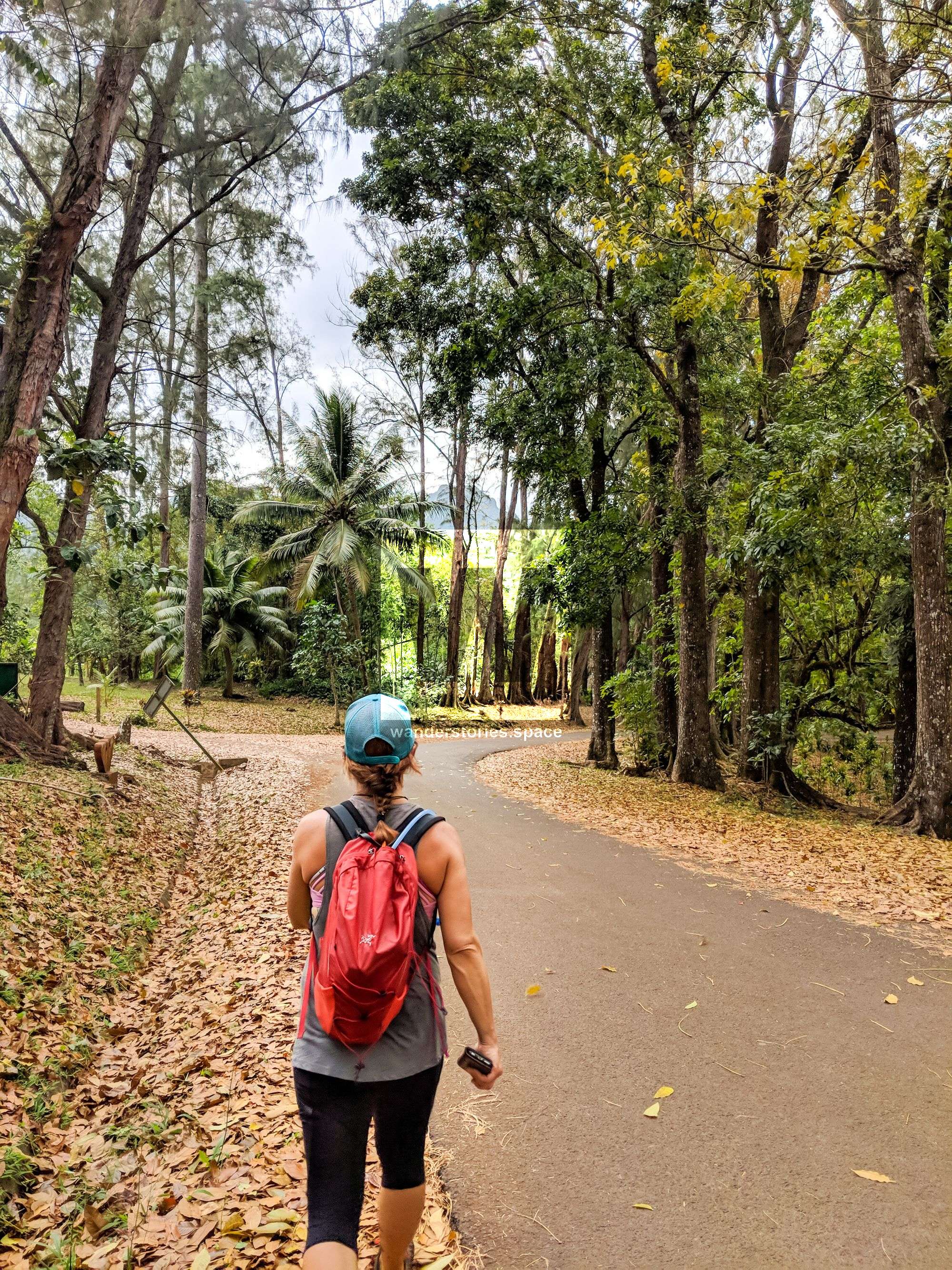
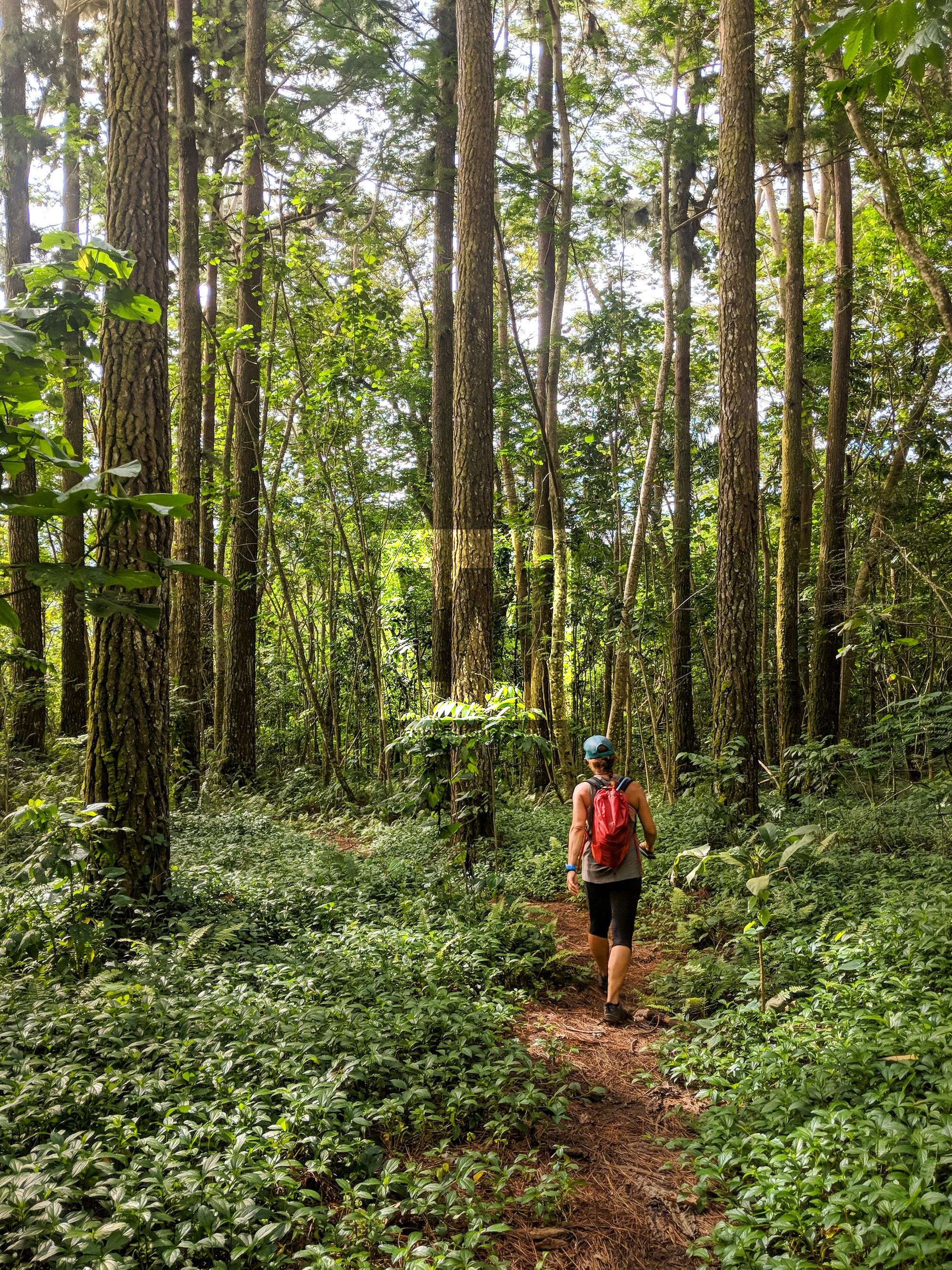
Hiking and Mountain Biking
There is an extensive trail network on Mo'orea, and many of the trails are marked with signposts. There is even a good map on the road to Belvédère Lookout that consists of both cycling and hiking trails in the area. Bring insect repellant and lots of water - it's hot, humid, and there are plenty of insects. It also tends to be muddy, especially during the rainy season. Strongly consider a dry bag for your electronics.
On Mo'orea, you can hunt for hidden waterfalls, walk and ride among the island's giant peaks, and - with a bit of effort - climb the mountains. You'll be rewarded with spectacular views over the island's dense rainforests, coastlines, and lagoons.
Cycling around the island is very scenic and gives you a great overview of the land. There are a couple minor hills, but most of the coastal roads are relatively flat. Consider cycling the circumference of the island. It's about 62 kilometers and one of the best ways to take in the different villages, landscapes, and scenery.
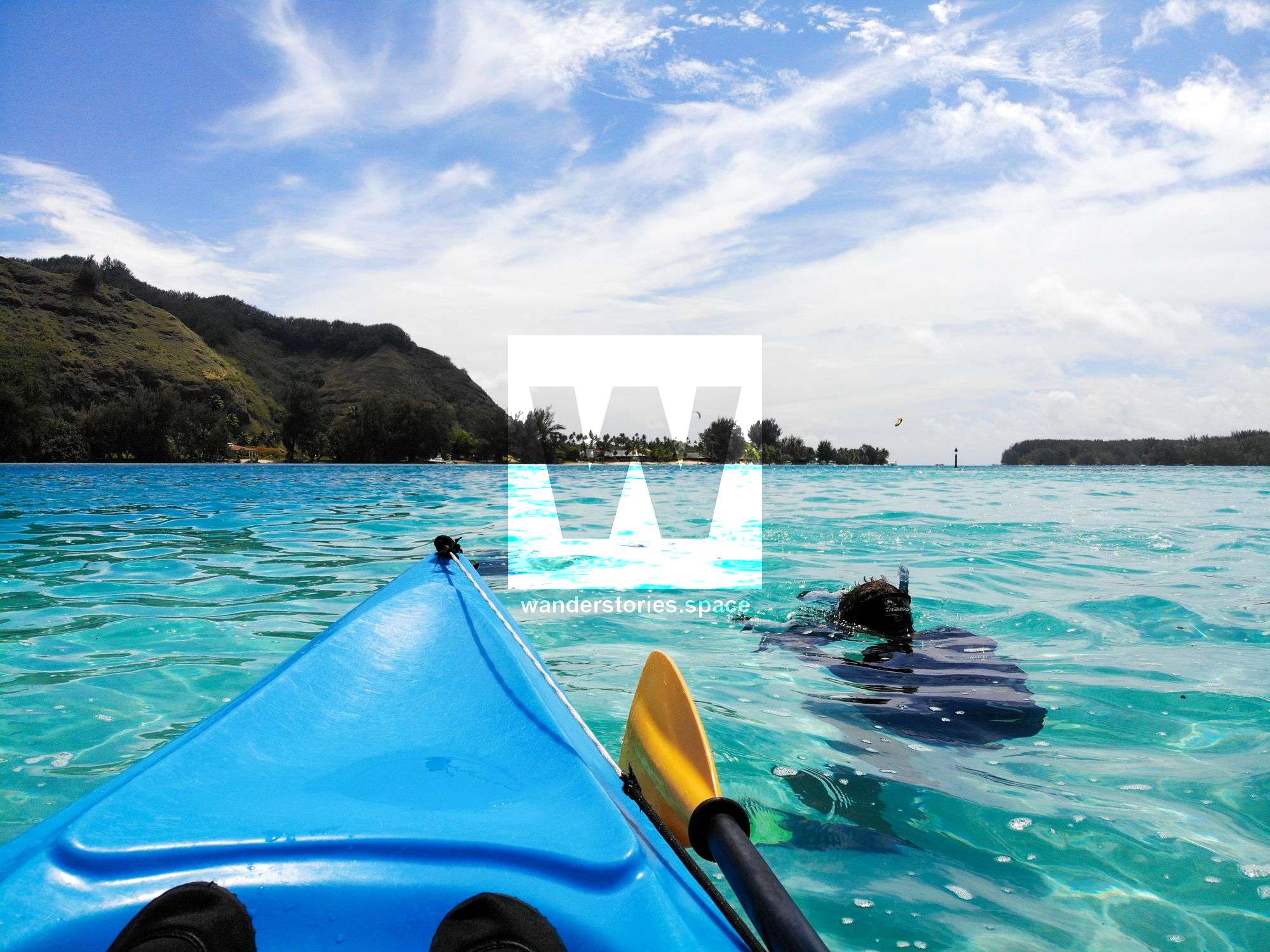

Kayaking and Stand Up Paddleboarding
The translucent waters of the lagoon are as inviting for kayakers and SUP paddlers as they are for divers and snorkelers.
Surfing
There's plenty of surfing and kite surfing around the island; however, the reef breaks can be challenging and winds strong. These conditions may not be conducive to beginners. The island's superb waves are for experienced to advanced surfers. Haapiti is the most popular surf spots on Mo'orea with powerful, deep waves over sand; plus it's pretty deep at the take-off point. Temae and Opunohu are other places.
Kitesurfers should fly their gear on the tradewind-catching lagoon in front of Temae or the Beachcomber Intercontinental Resort. With easterly and northeasterly winds for most of the time and its shallow waters protected by the barrier reef, kitesurfing has become very popular on Mo'orea. Kiteboarding seasons is all year round except from December to February when it's the rainy season and the winds are gusty.

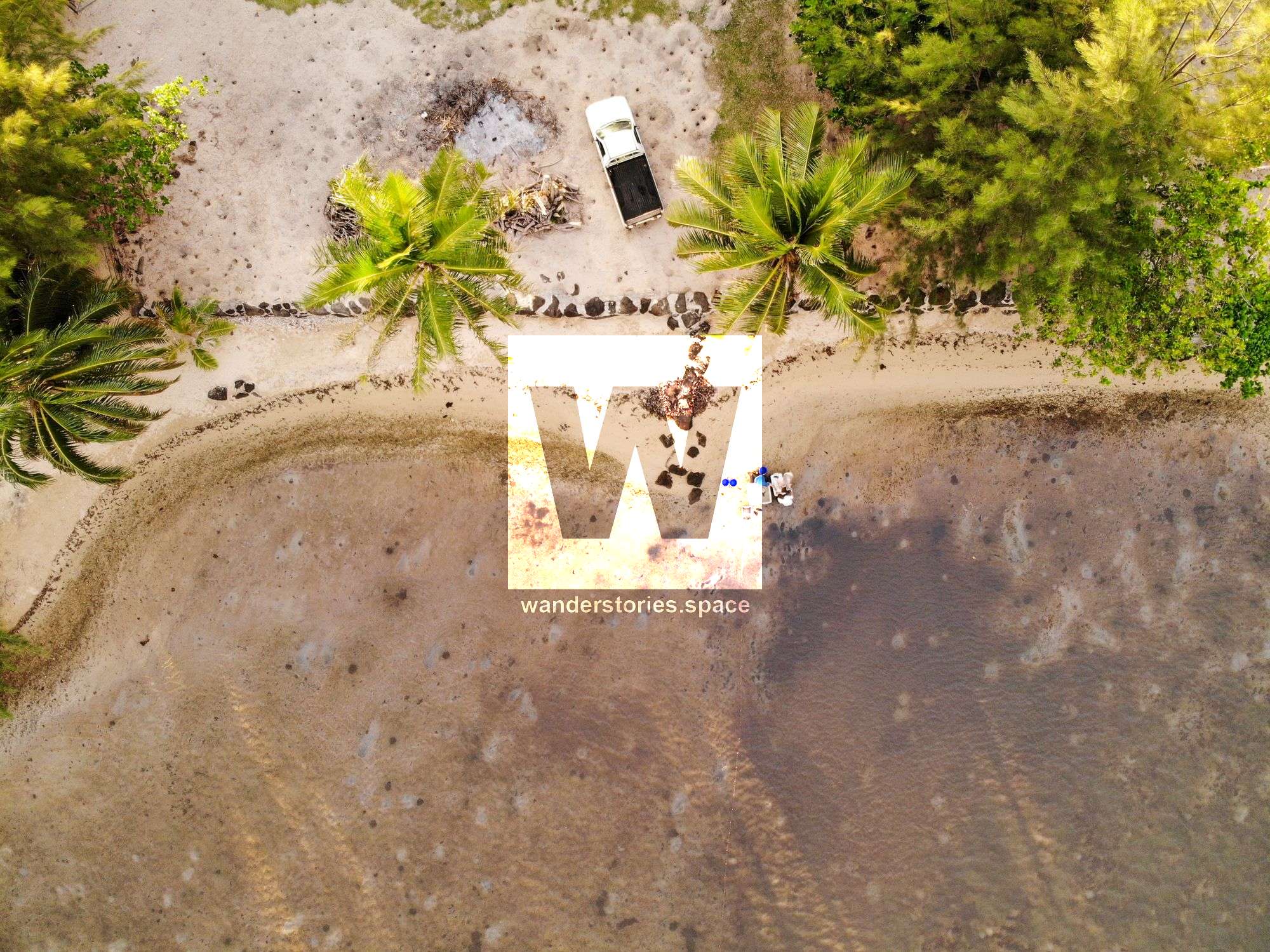
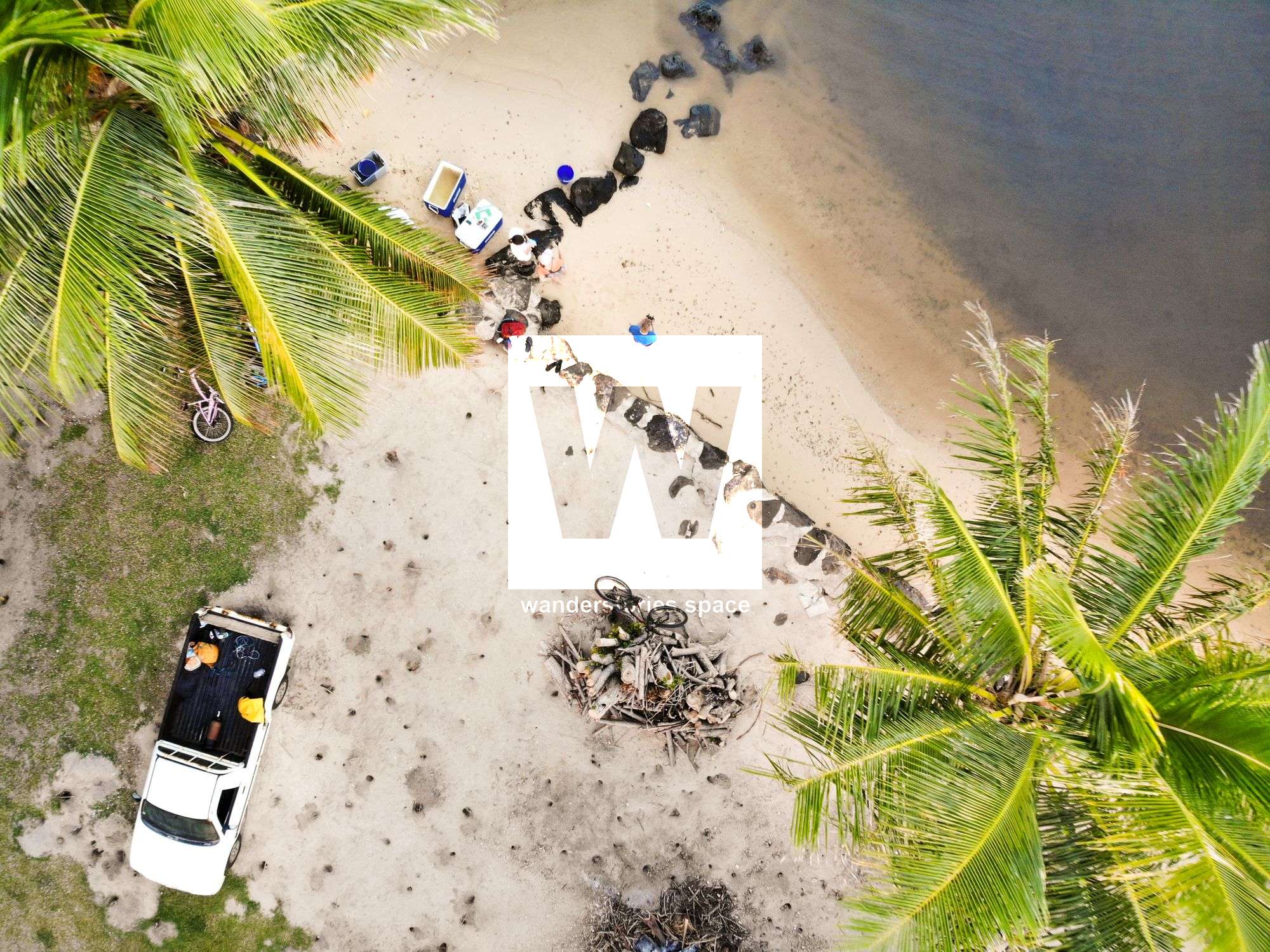
Beaches
Temae Beach
The largest (and perhaps best) public beach seems to be Temae Beach, which is just next to Sofitel Resort's private beach. An exceptionally wide, white-sand Mo'orea beach fronted by a turquoise swimming pool of ocean. The dirt road entrance is located between the airport and the Sofitel. This beach has outdoor showers and public toilets, and there are a few trees for shade.
Ta'ahiamanu Beach
Ta'ahiamanu Beach (Mareto) is one of the three public access beaches on the island. This narrow stretch of white sand is a popular spot for both tourists and locals on weekends. Snorkelers will find plenty of coral and marine life right in front of the beach.
Tiahura Beach
The last of the three public beaches and is located near the Sunset Restaurant.
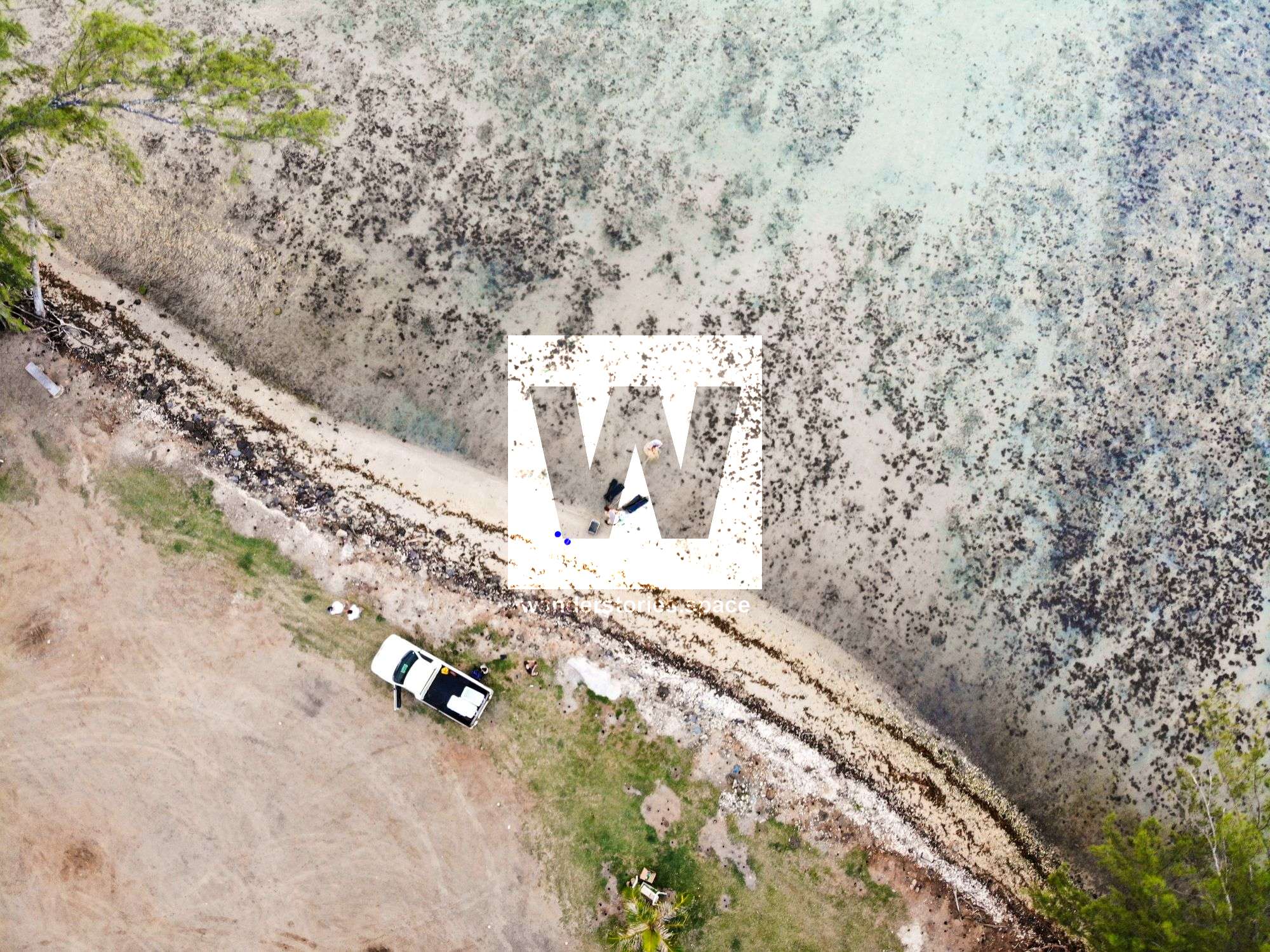
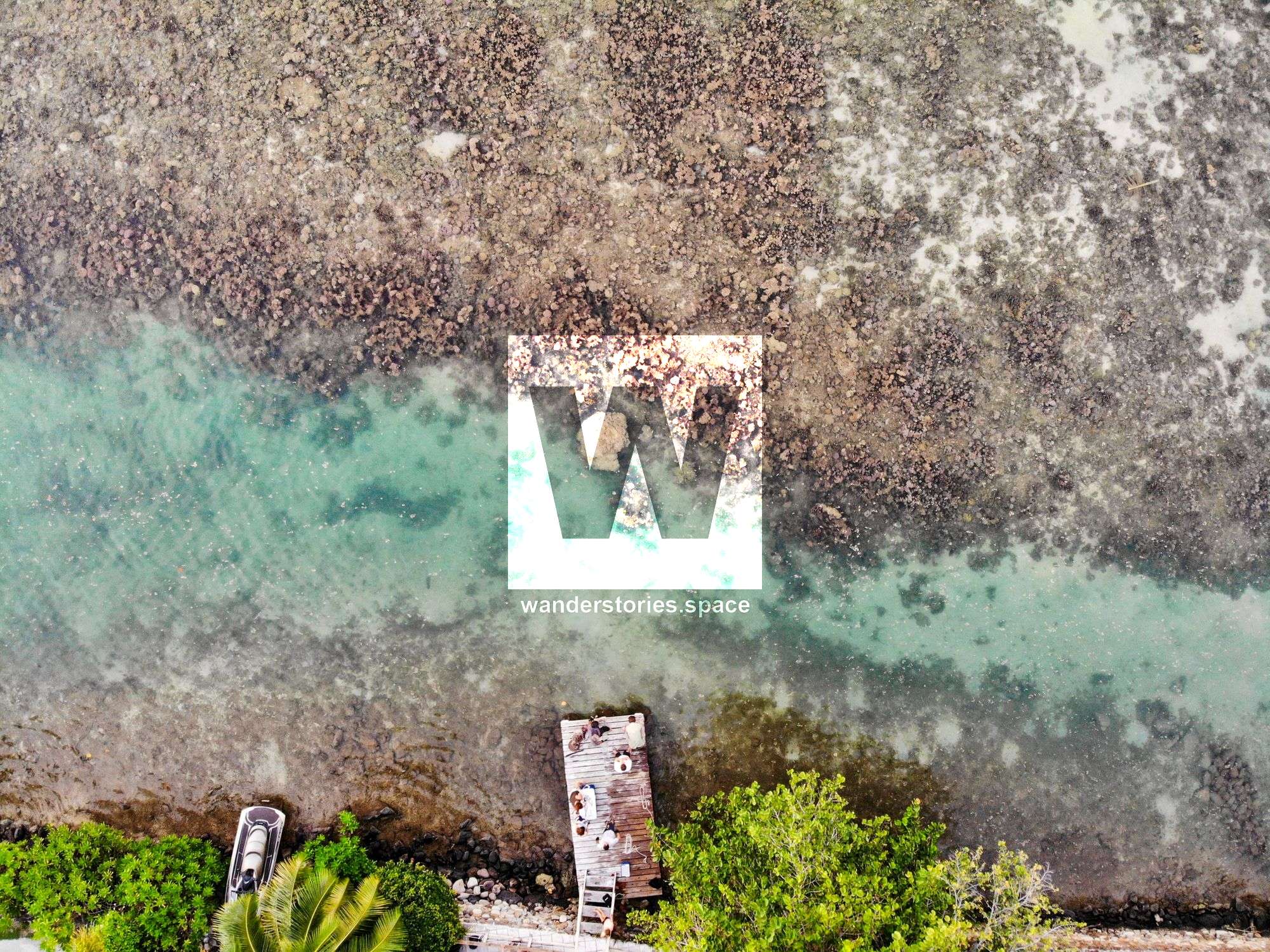
Motus
There are also a few islets - called motus (pronounced moe-too)- around Mo'orea you can visit. Motus often have great snorkelling, and there is one south of the ferry terminal that has educational lectures and sea turtle rescue and rehabilitation activities. These two attractive motus are so close to the shore you can easily paddle out to them (beware of the current, though). Remember that the actual motu are private (although the littoral areas aren't).
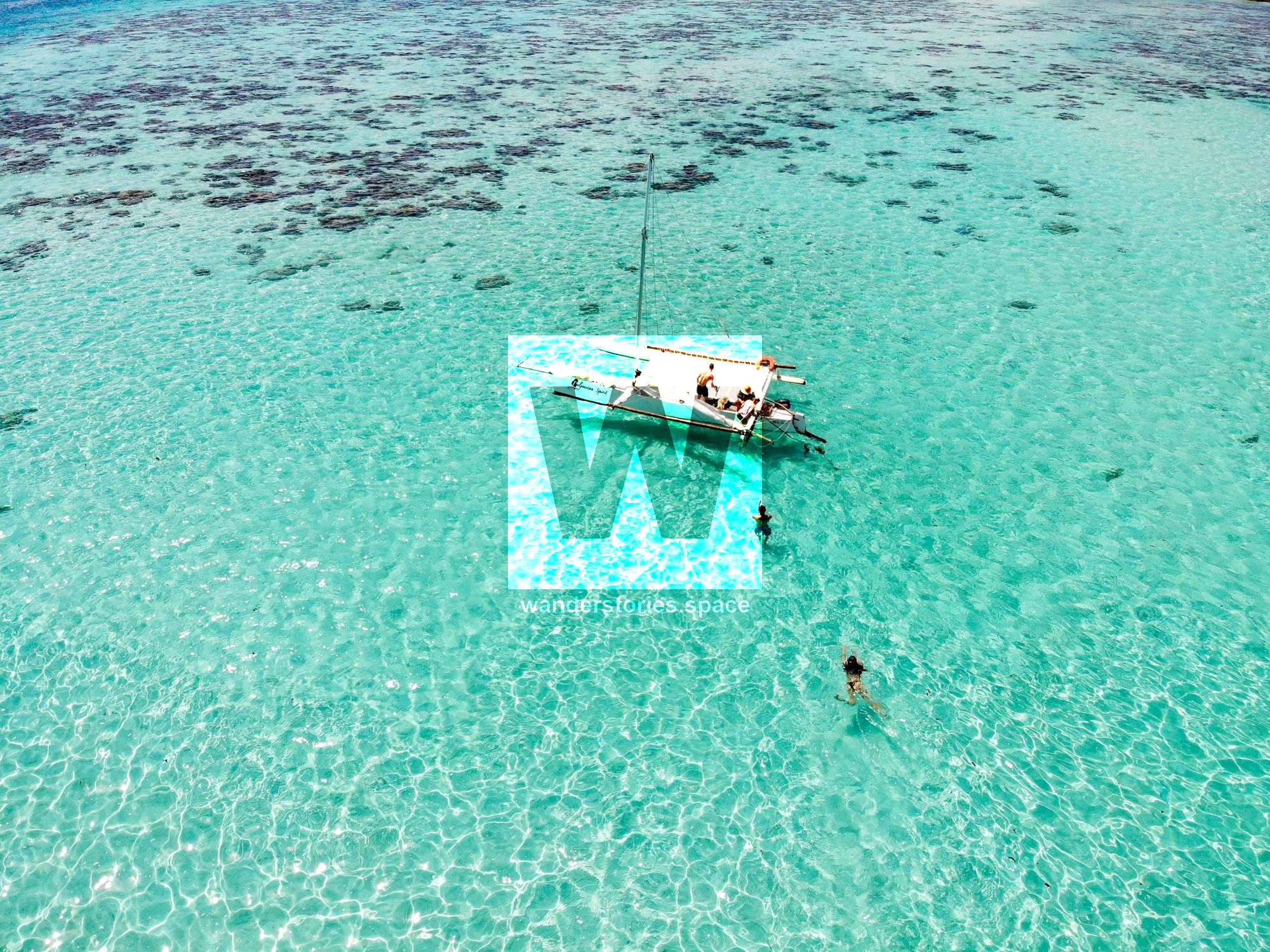
Snorkelling
Swim with rays, sharks, and tropical fishes with coral gardens providing the backdrop to your views. There are a few sites where the stingrays congregate for feeding and at least one site where you can snorkel and swim with these stingrays and blacktip reef sharks. To get there, you can swim out to it from the beach at either the Intercontinental Hotel or Hotel Hibiscus. However, it's a long swim, and there are strong currents, especially while crossing the channel that can make it dangerous. Consider hiring a kayak on Coco Beach of the Les Tipaniers (or Hibiscus Hotel). You can swim along with the sharks and rays, but please do not touch them, as they are easily affected by land bacteria and even the abrasions that can come from your rings or other jewellery.
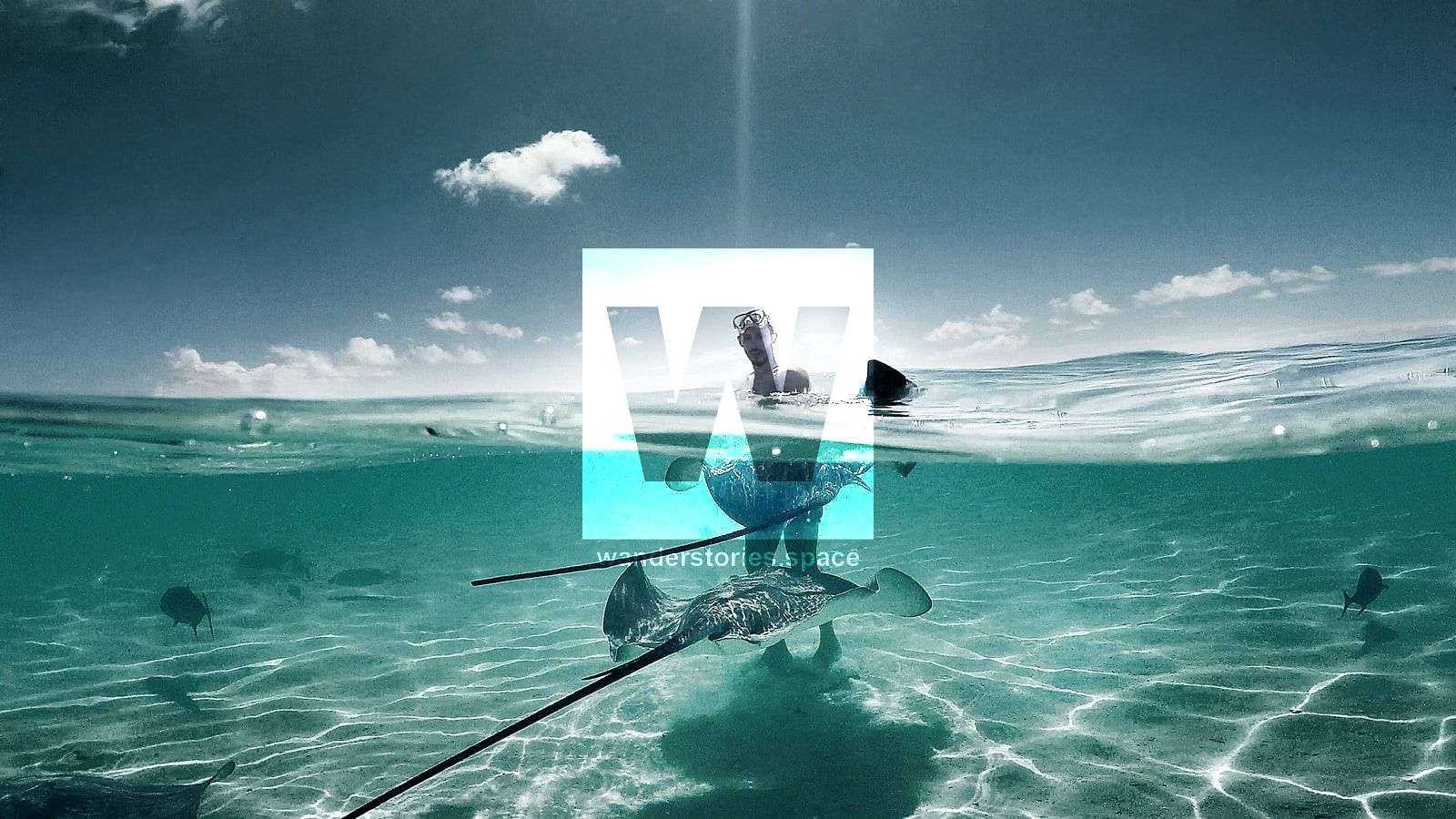
Scuba Diving
Scuba diving in Mo'orea is one of the main highlights of French Polynesia, and there are a number of dive operators on the island. It offers easy, relaxed diving, with a good balance of reef dives and shark dives. The reefs near Mo'orea slope gently away in a series of canyons and valleys, unlike Tahiti which drops off steeply. French Polynesia is also the world's largest Shark Sanctuary. This means that sharks cannot be fished or exploited in any way, which is great for tourism and helps to honour the cultural importance of sharks to Polynesians as well. The biggest attractions - literally - are lemon and tiger sharks. You'll also be treated to the inevitable sighting of nurse sharks, blacktip reef sharks, whitetip reef sharks, but also the occasional lemon sharks, sea turtles, moray eels, dolphins, and maybe even whales! The iconic and culturally revered oceanic whitetip shark can also be spotted from time to time, if you're lucky, as well as hammerhead sharks. The most popular boat trips are those that take you to dive with the tiger sharks (e.g., Vallée Blanche between Mo'orea and Tahiti) and to swim with the humpback whales when mothers have their calves (July to early November).
Dolphin-Watching and Whale-Watching
French Polynesia is an important breeding ground for humpback whales, which
migrate to Polynesian waters between July and early November. It's one of the best places in the world to see these magnificent creatures. They can be observed caring for new calves, engaging in elaborate mating rituals, and learning to swim and breach. If you're lucky, you'll get to swim with the mammals, but just seeing them in the water is a real thrill.
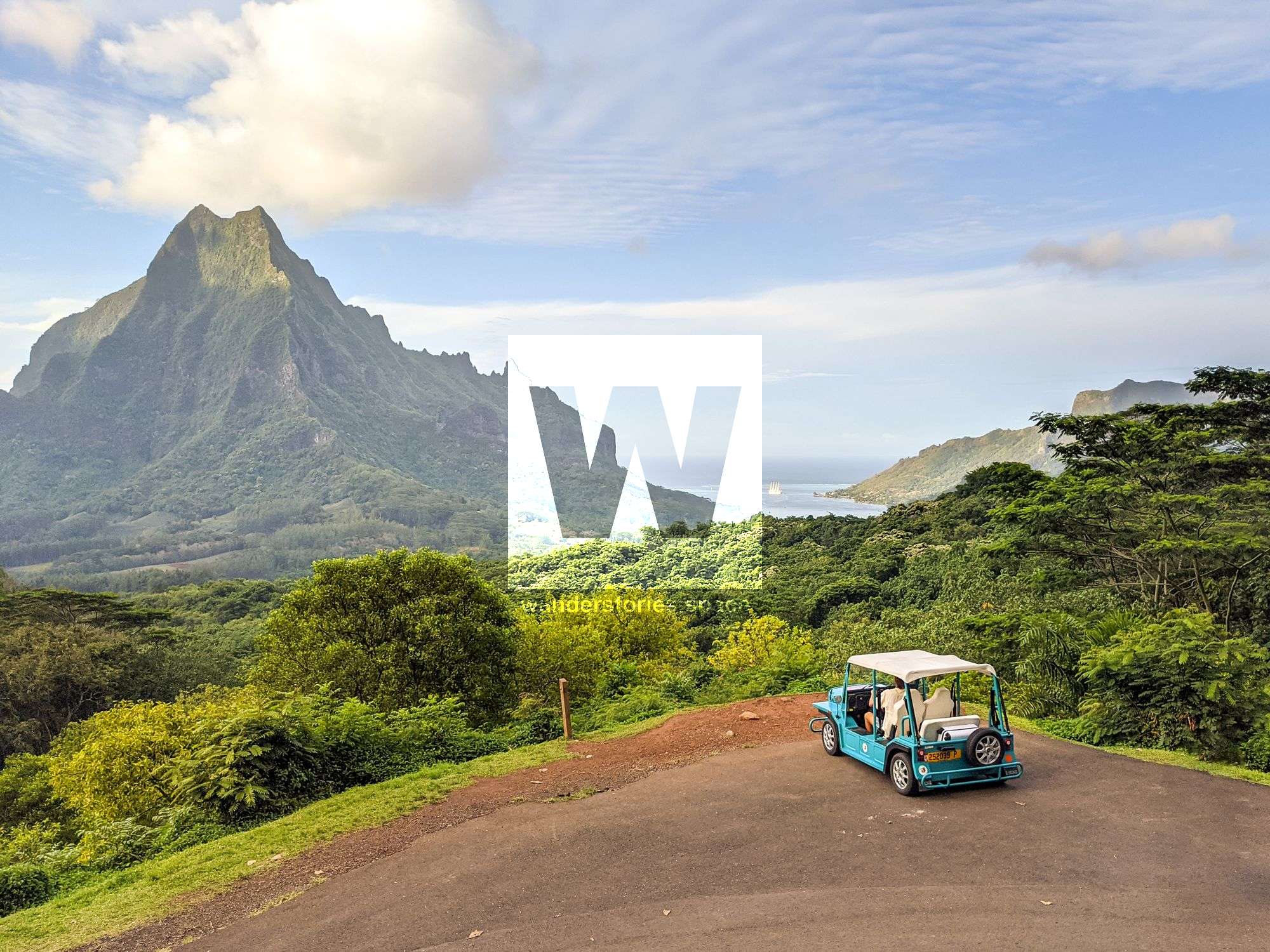
Main Vantage Points
Toatea Lookout
Look out over the Sofitel Resort to see their bungalows that reach out into the bay with views across to the island of Tahiti. The viewpoint above the Sofitel offers a great perspective on all that is Polynesian: the traditional man-made structures of island life, the tranquility of the lagoon, the breaking waves at the reef, and the lush vegetation. Pack a camera and a picnic to enjoy at this easily accessible, roadside location, set high on the hill. You may even spot a whale breaching close to the shoreline.
Belvédère Lookout and Opunohu Valley Loop
From a lush valley, through archaeological sites to one of the most spectacular viewpoints in the country. See the extensive panoramic views of Mo'orea with uninterrupted sights of Cook's Bay, Ōpūnohu Bay, Mount Rotui, and the dense vegetation of Ōpūnohu Valley. The viewpoint offers great photographic opportunities from sunrise to sunset. Bring a picnic with you. This lookout serves as a hub for many of the hiking trails further into the hills. The point is easily accessible by car, foot, or bike, as well as being a stop-off destination for a range of tour groups.
International Mo'orea Marathon
This annual marathon is held in February and tackles half of the island of Mo'orea. There is also a shorter half-marathon (21 km) and an 800 metres 'family run'. The race finishes at Temae Beach where runners can cool off in the lagoon.
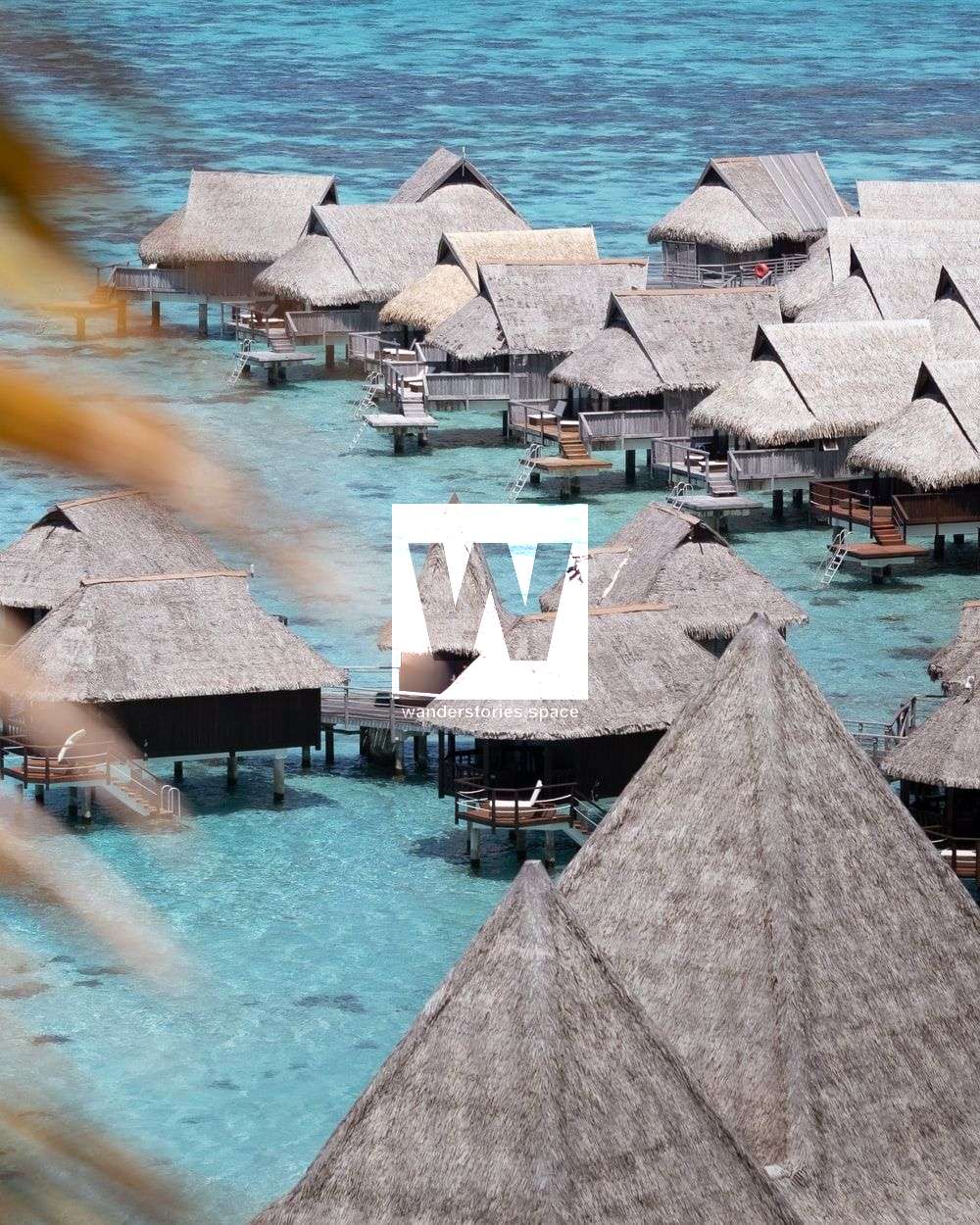
Accommodation
It's arguably as rugged and beautiful as Bora Bora, but the resorts have remained more low-key and thus lower-priced. Mo'orea is one of the few islands that has a handful of backpacker-style accommodation and camping. It also has some local, very homey places like Airbnb that will welcome you like family, some mid-range bargains right on the beach and even some extremely high-end villas on private motu (island).
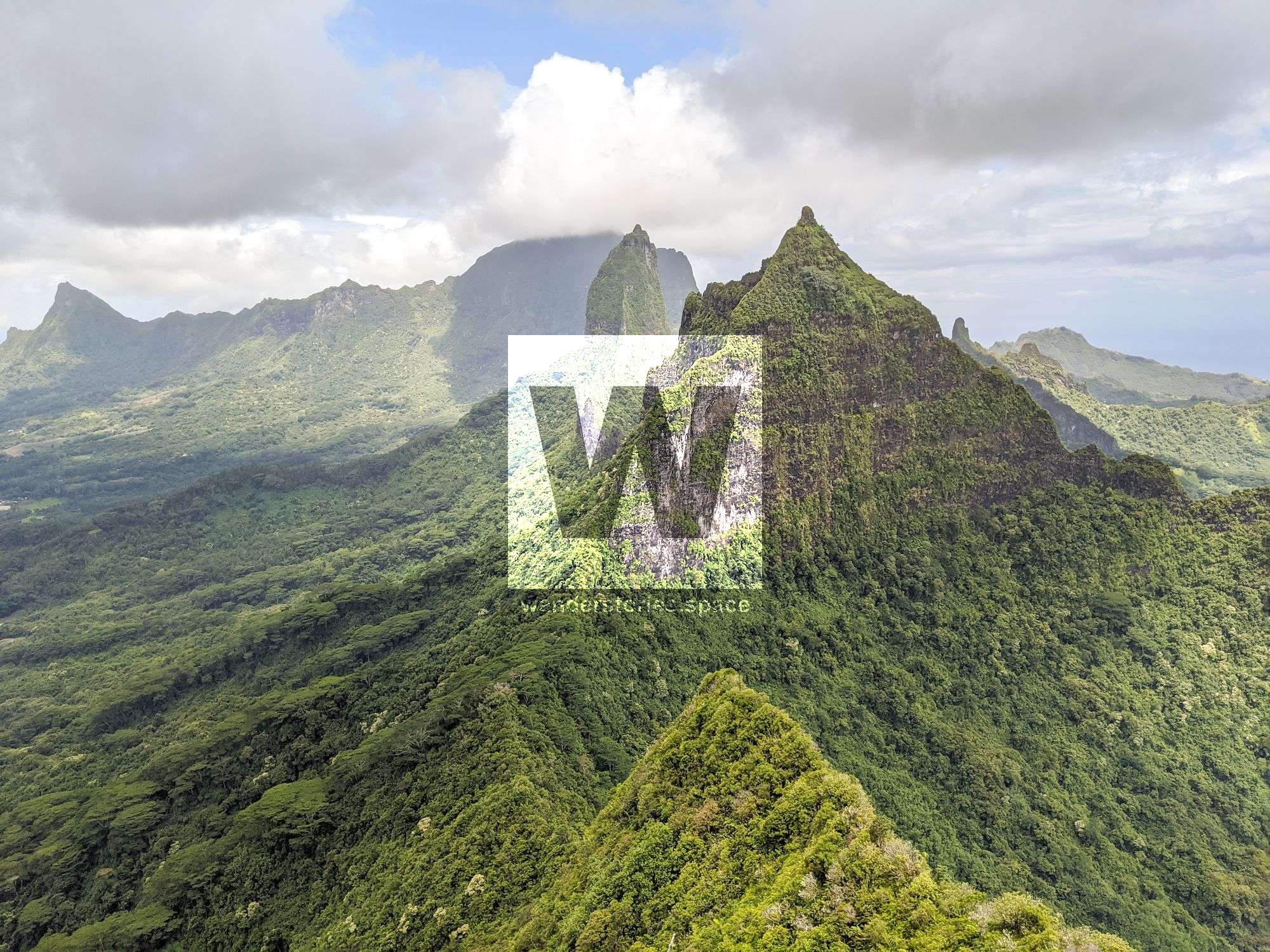
When to Go
- November to April are the wetter months.
- May to October are usually the drier season which is perfect for outdoor activities, especially hiking.
- July and August are fairly windy and maybe chilly when the mara'amu (southeast trade wind) blows.
- Diving and surfing are popular year-round.
- The whale-watching season runs from July to early November.
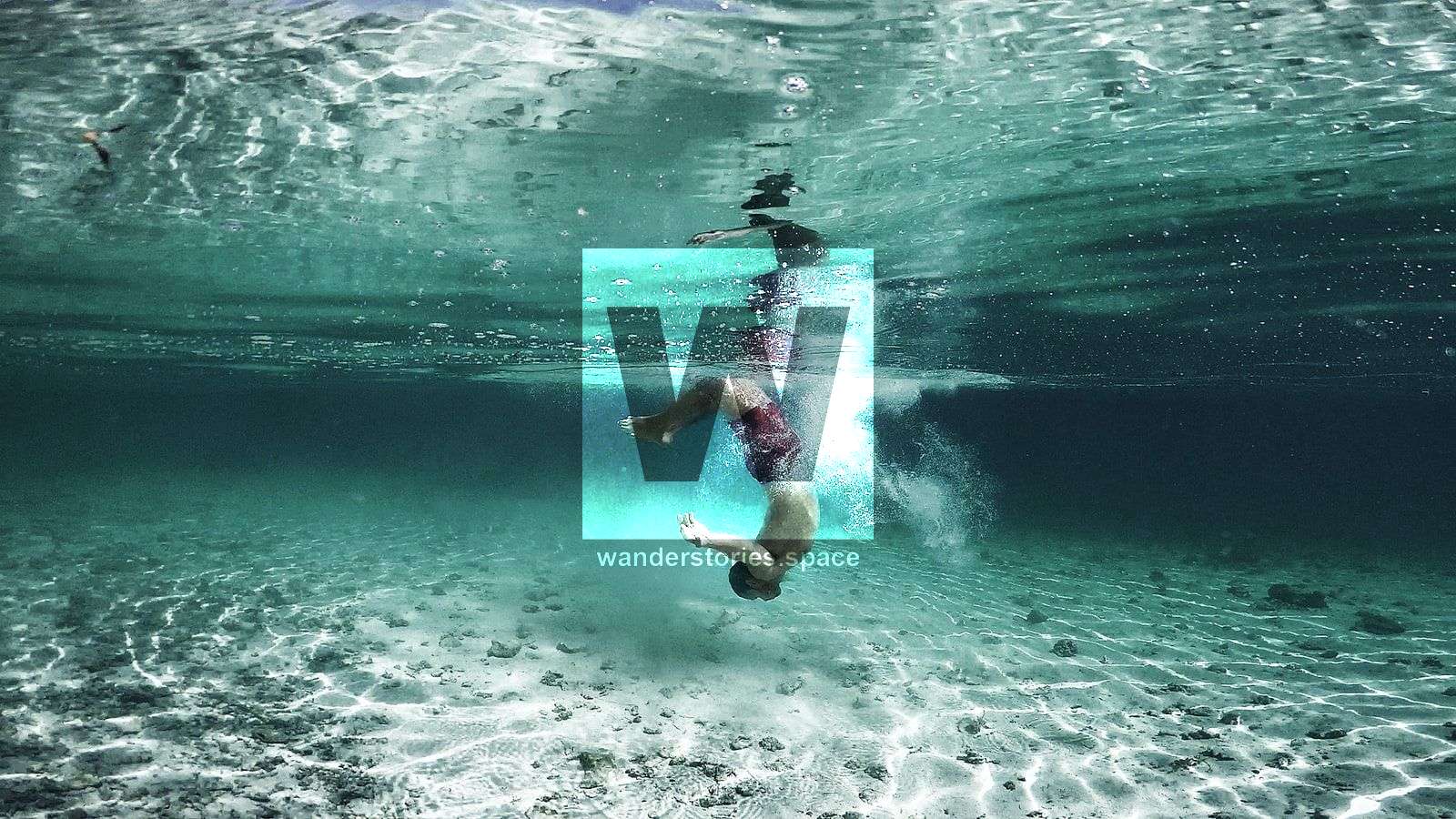
Brief History
The island's ancient name was Aimeho (also spelt 'Aimeo or 'Eimeo'). However, it's now called Mo'orea, which means yellow lizard and is suspected to have come from one of the island's ruling families. Others attribute the name to an image seen by a high priest while visiting the island. Early Western colonists and voyagers also referred to Mo'orea as York Island.
Mo'orea was heavily populated before the Europeans arrived. Samuel Wallis was the first European to sight the island (1767); he was soon followed by Louis-Antoine de Bougainville (1768) and James Cook (1769). The missionaries arrived in the early 1800s and established their headquarters on the island.
Similarly to the rest of the world, European diseases and the introduction of weapons and alcohol had a negative effect on its population. Copra and vanilla were the main crops in the past, now Mo'orea is the leading grower of pineapples in French Polynesia. Tourism is the other major industry.
The first settlers in French Polynesia landed in the Marquesas, having come via Samoa, around 200 BC. They then went on to discover the Society Islands around AD 300.
Before Europeans, Polynesians arrived on canoes coming down from South Asia. It is estimated that they arrived on Mo'orea roughly 1000 years ago. Scattered throughout the islands, the most visible remains of ancient Tahitian culture are in its marae, open-air places of worship and sacrifice with rocks stacked like pyramids. The rocks were carvings that tell when sacrifices occasionally took place.
They had it all - music, dance, and the arts would have been a big part of life. However, overpopulation caused food and resource shortages and wars frequently broke out between the clans. The victors would then massacre, take possession of the defeated clan's lands, and destroy their maraes.
Today, Polynesians have different beliefs and many of these temples have been destroyed or simply left to become engulfed by vines and weeds. The small marae were a place to celebrate births, deaths and other events; larger marae were similar to temples where meetings, sacrifices and ceremonies took place. The oldest marae is the 'Āfareaitu Marae, located in the island's main village. It was made by the early Polynesians in the year 900.
In the 1870s, the missionaries constructed an octagonal church in Papetoai Village. Today this popular tourist attraction is the oldest standing European-building in the South Pacific. As was often the case, missionaries deliberately built this church atop an old marae.
Topographical Map
Everyone loves a good map! Here's the interactive map of the area.
Currency
The official currency is French Pacific Franc (CFP), however, US dollars and Euros are widely accepted in the islands. The value of the CFP is pegged to the euro and fluctuates against the US dollar. MasterCard and Visa are commonly accepted in almost all hotels, restaurants, and boutiques while American Express is only accepted in some.
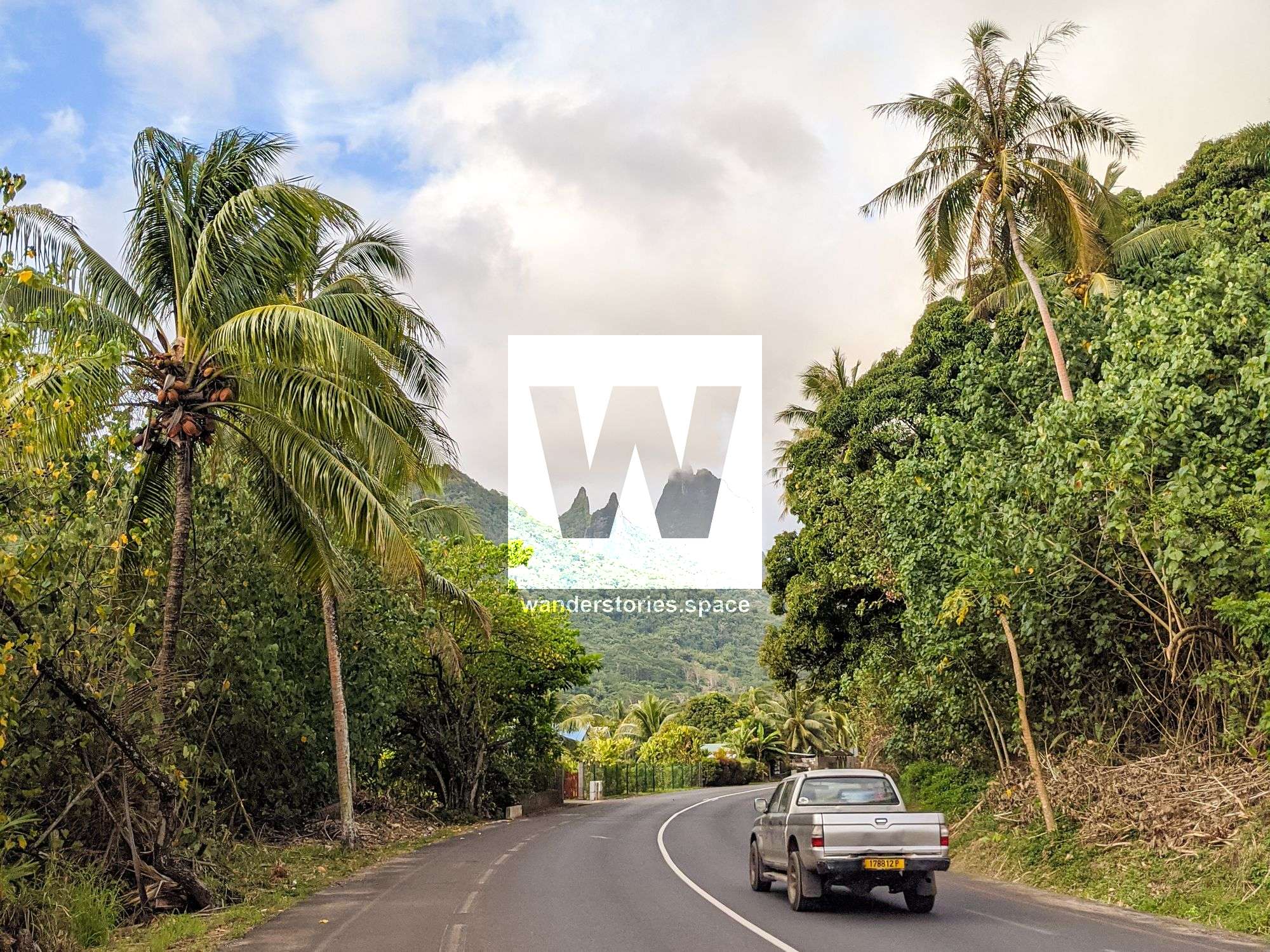
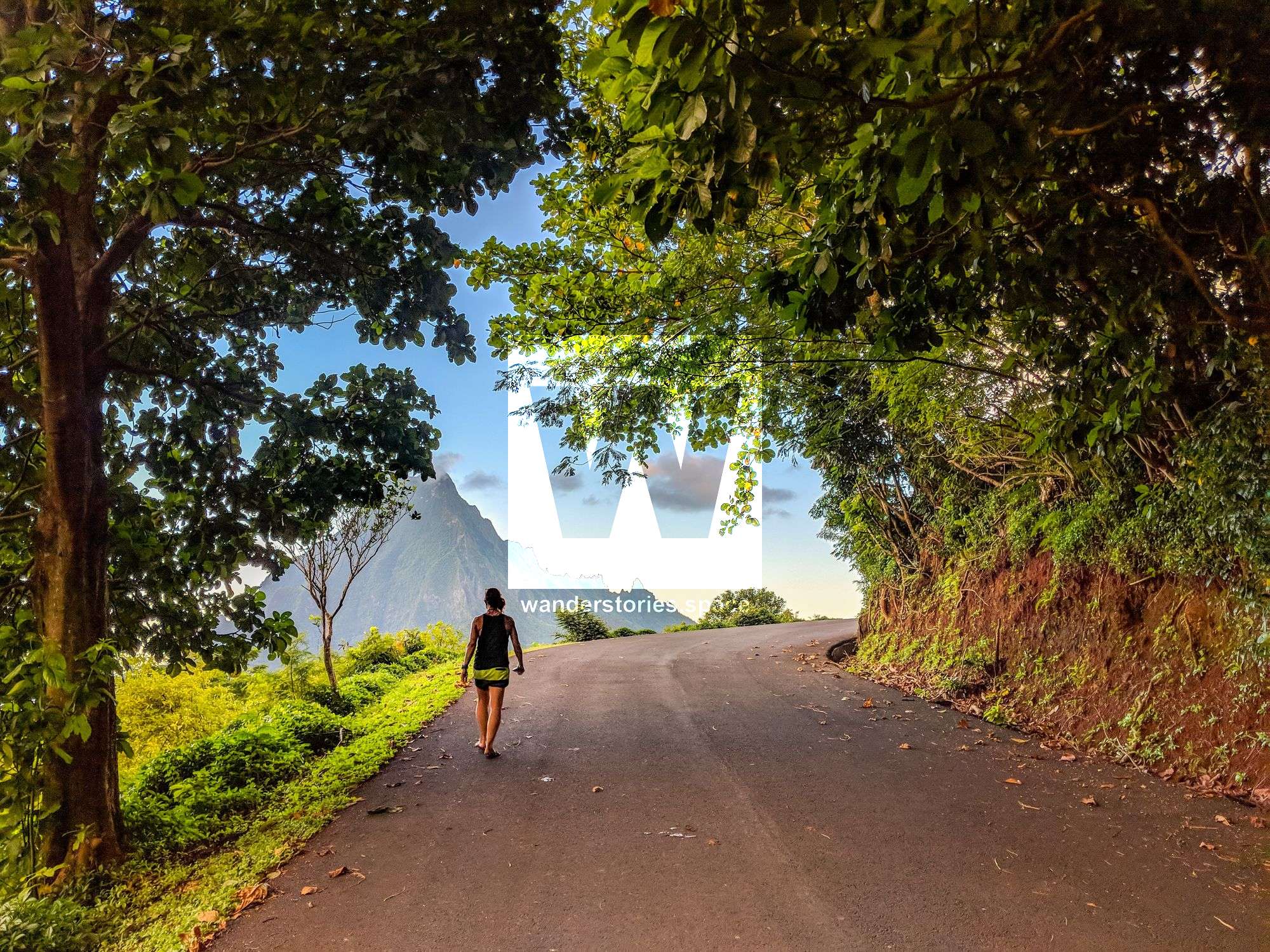
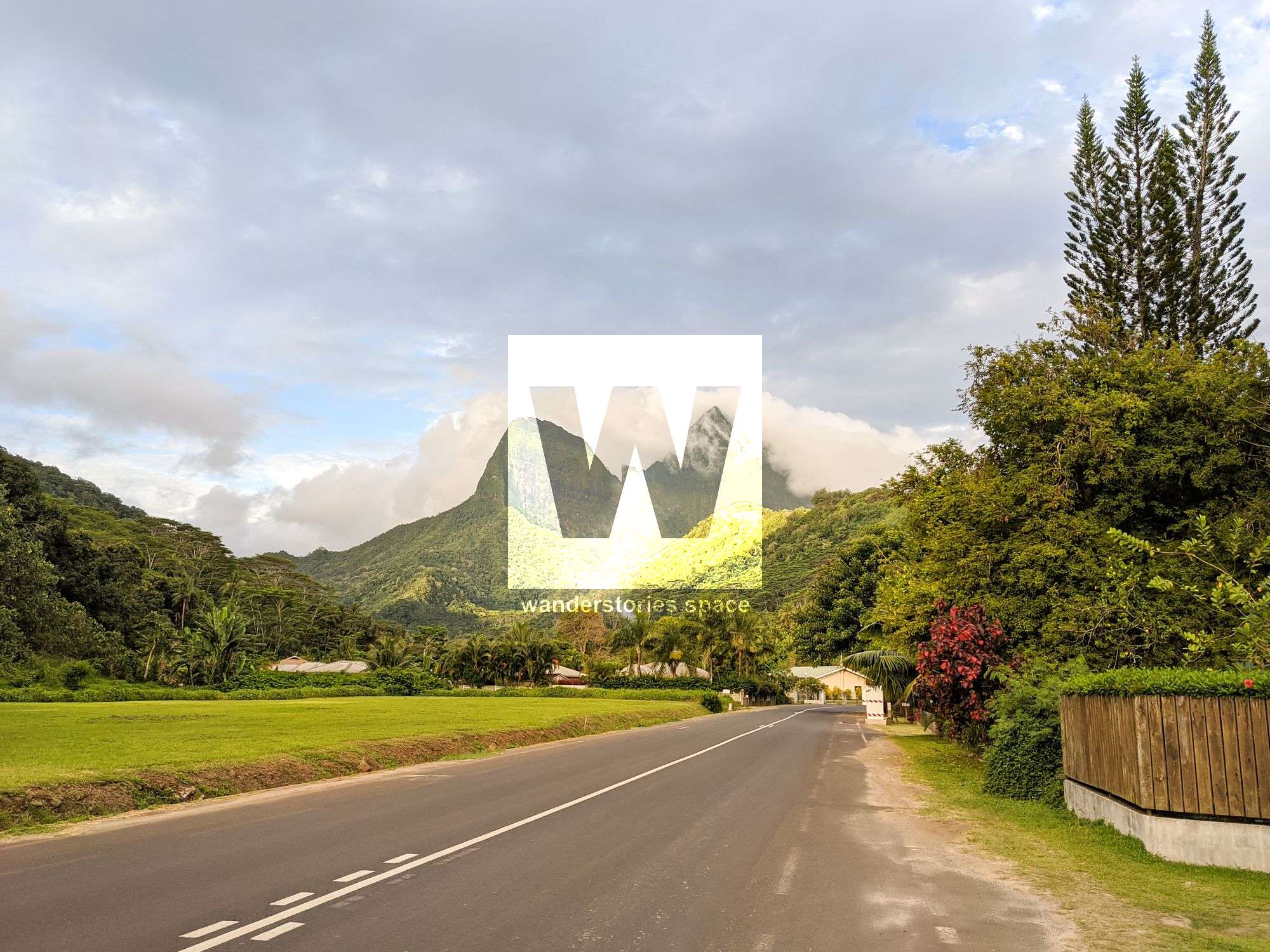
Getting There
Several ferries go daily from Pape'ete in Tahiti to Vai'are in Mo'orea. The ferries have to pass through Tahiti Lagoon, through the channel and through Mo'orea's coral pass. The Vai'are bay is in the east part of Mo'orea. Mo'orea also has an airport, Tema'e Airport, which has connections to the international airport in Pape'ete. If the islanders want to make an international flight, they would take Air Tahiti to get to the Fa'a'ā International Airport on Tahiti. The Mo'orea airport is located north of Vai'are in Tema'e.
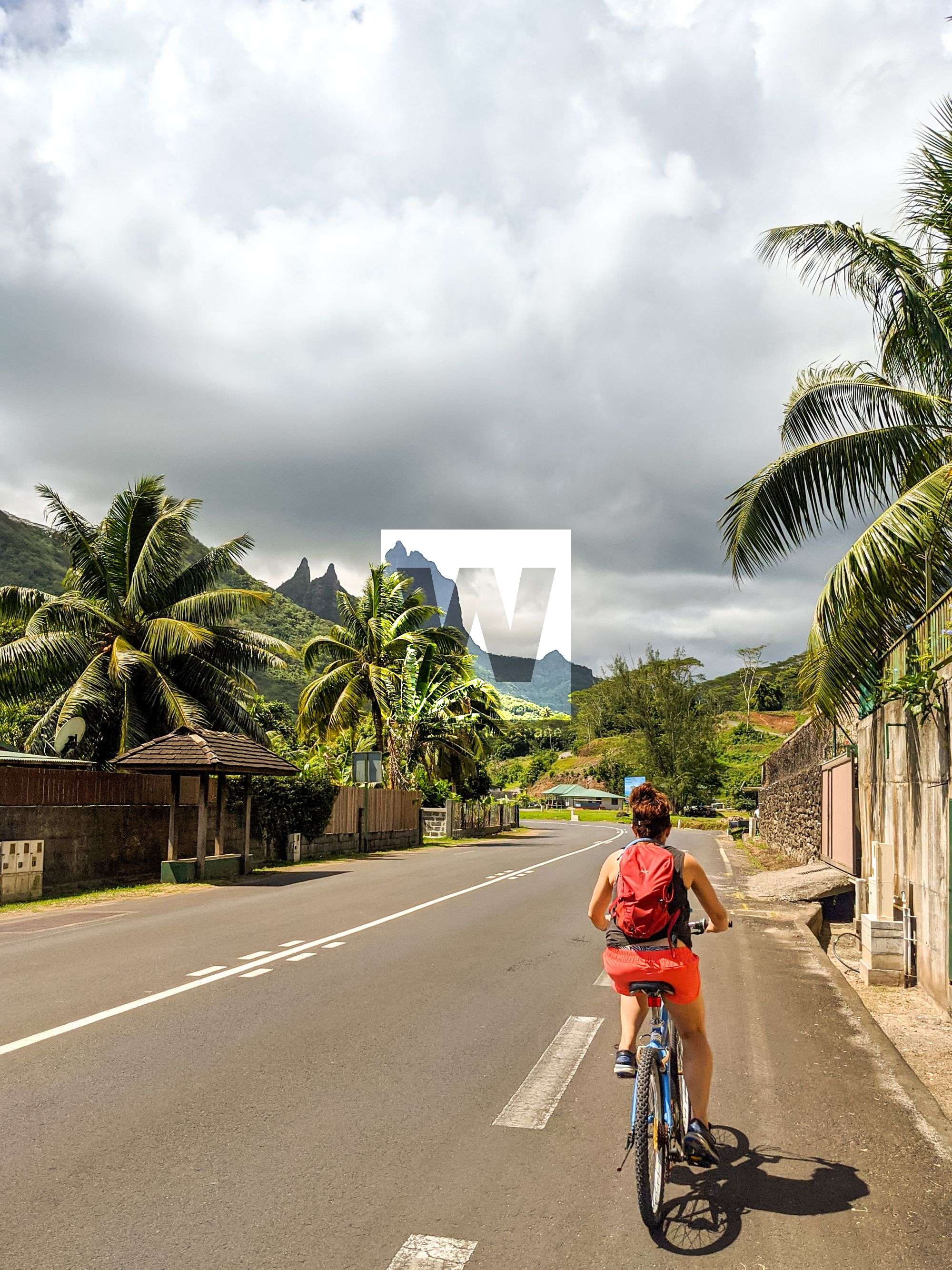
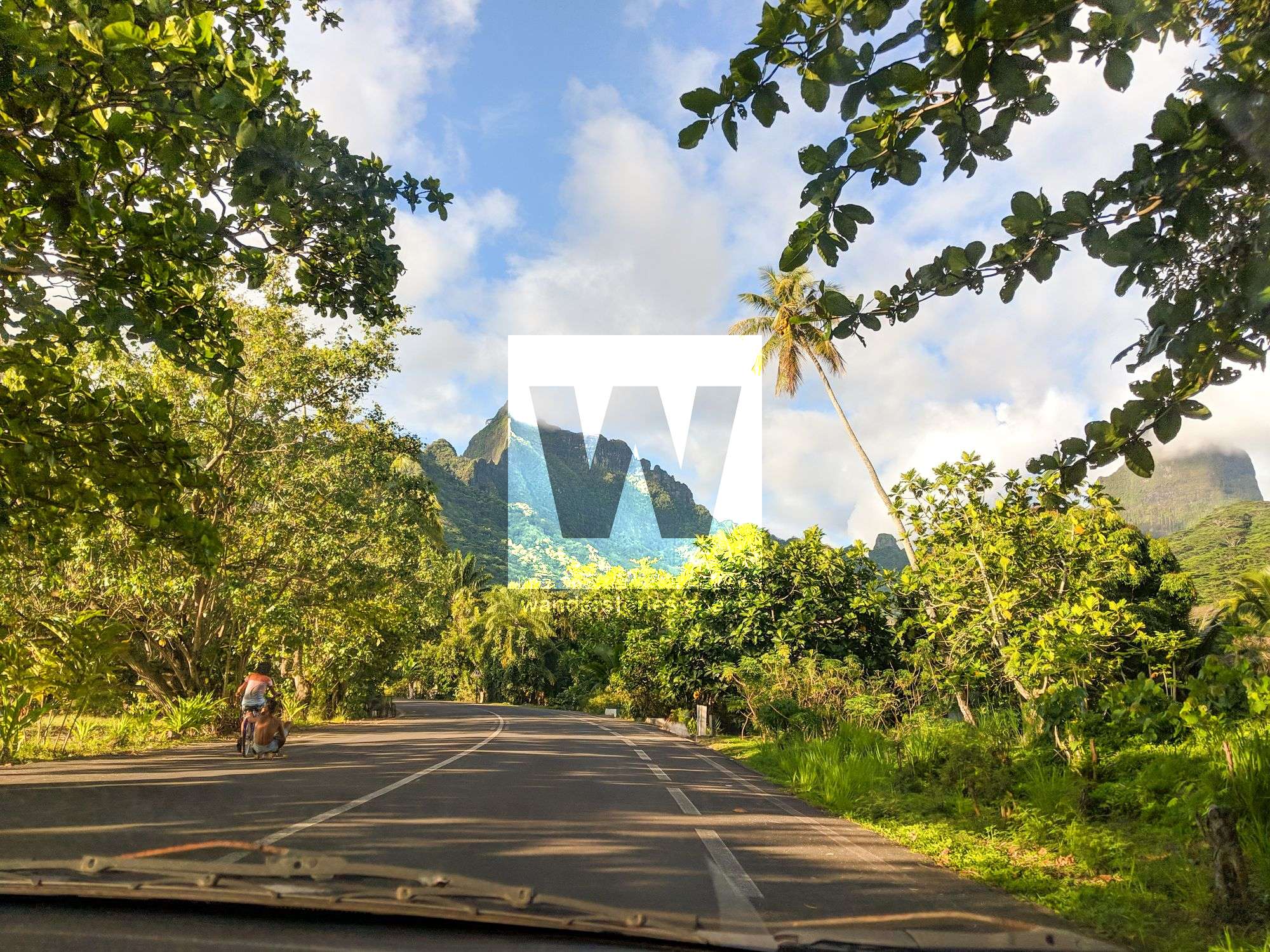
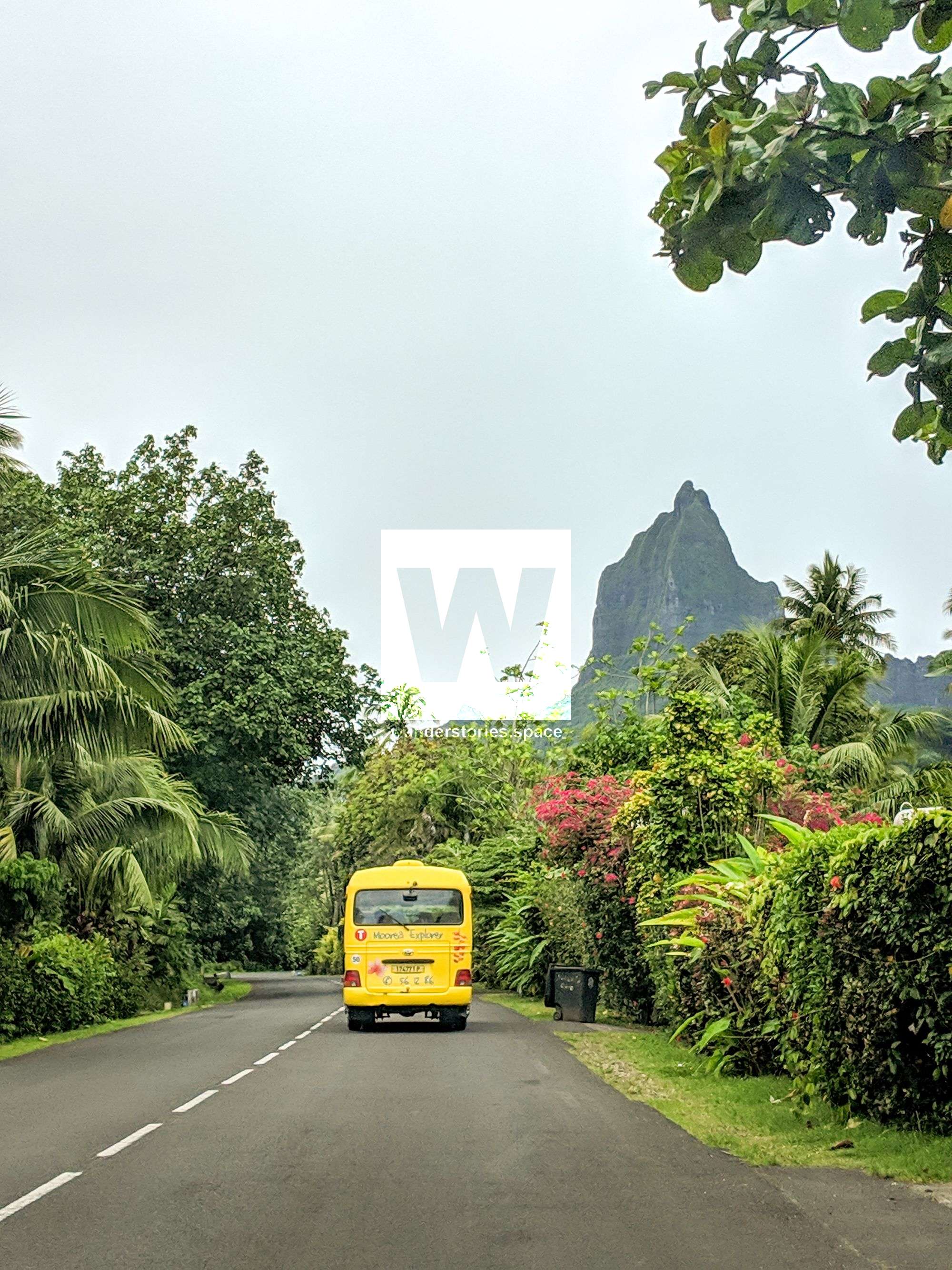
Getting Around
There is one road that goes around the island. Along the road are kilometre markers in the shape of Mo'orea. The coastal road is about 60 kilometres. Getting around Mo'orea without a car or scooter is relatively easy - besides, there are hiking trails that traverse through the centre of the island. Distances aren't great but are often too far to walk. Hitch-hiking is a great alternative. Most locals are friendly and will to give you a lift but is advantageous to speak a little French. If you are going halfway across the island, you may need to do this several times.
This article, and all other articles, are for entertainment purposes only and are not to be used as a guide. Please see our Disclaimer for more information.

